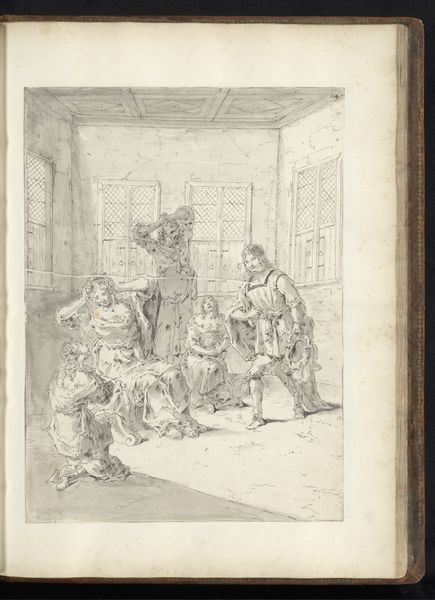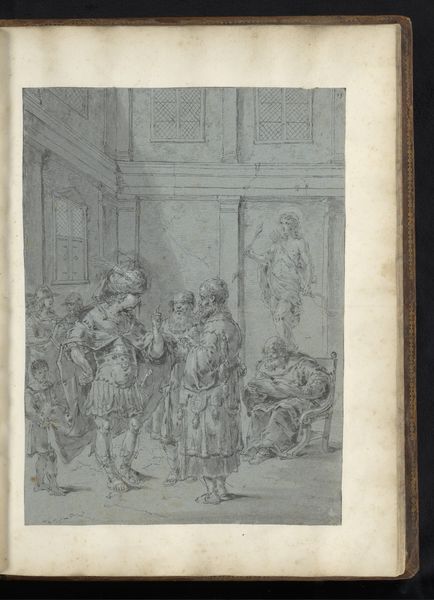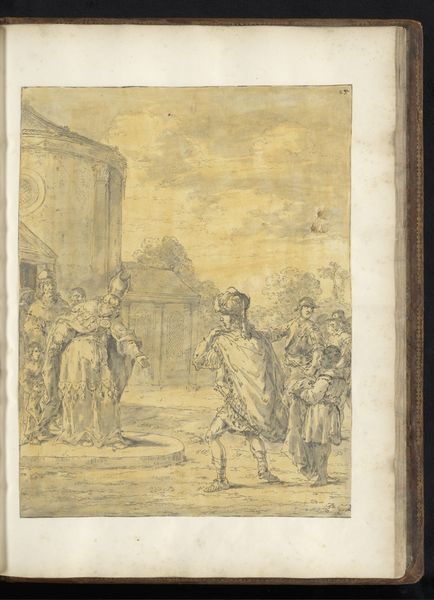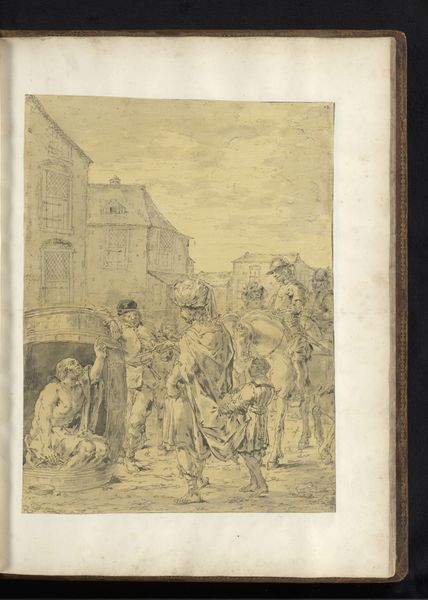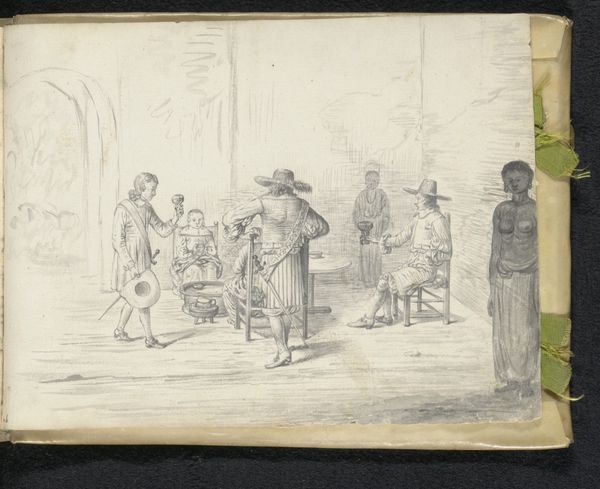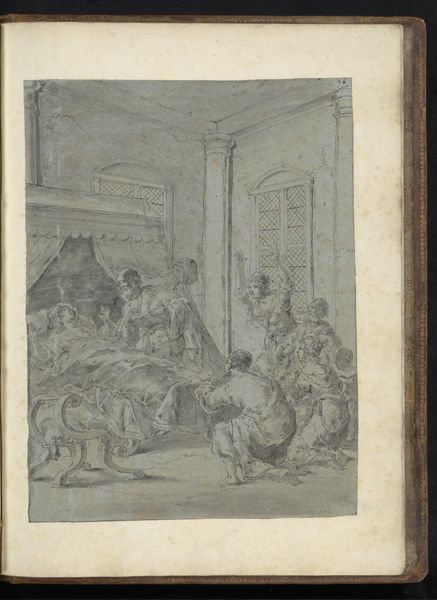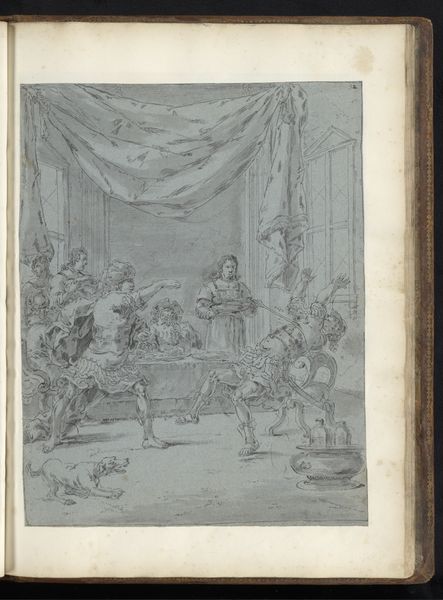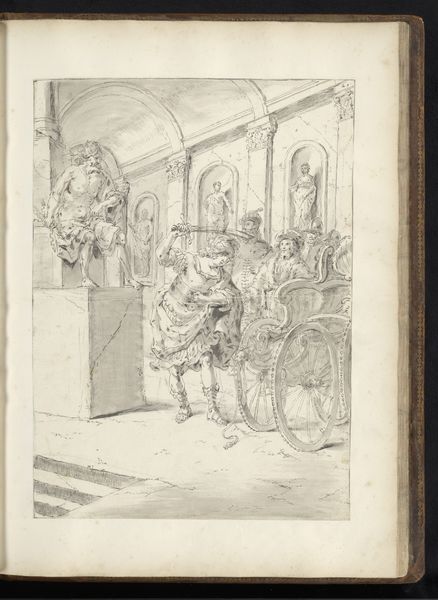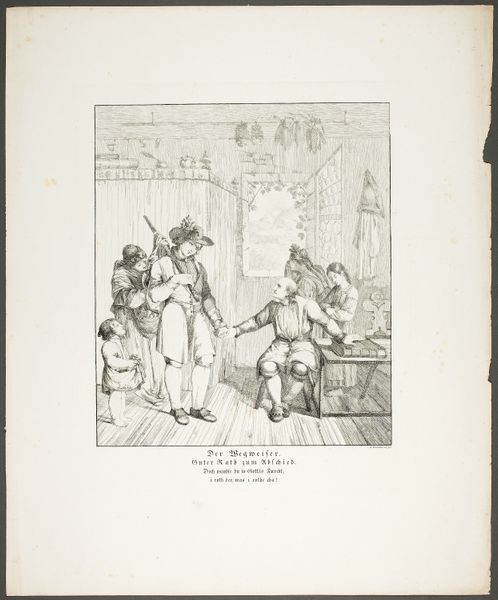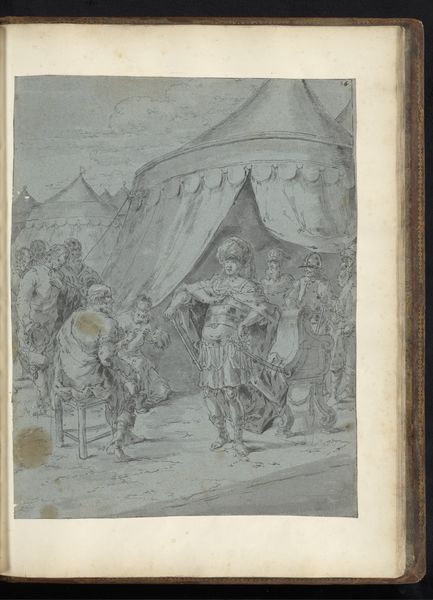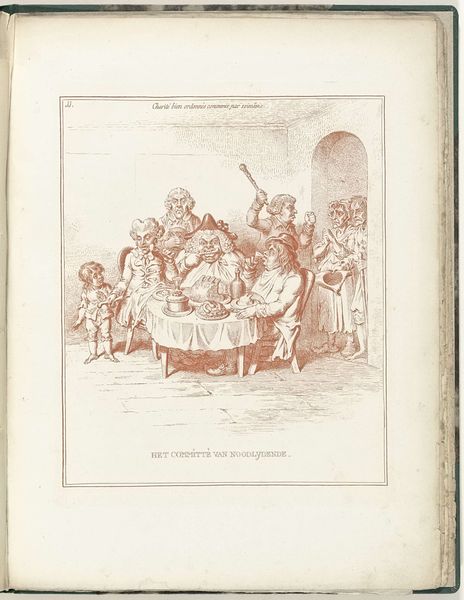
Alexander de Grote wordt verkozen tot opperbevelhebber c. 1655 - 1665
0:00
0:00
leonaertbramer
Rijksmuseum
drawing, paper, ink, pen
#
drawing
#
narrative-art
#
baroque
#
figuration
#
paper
#
ink
#
pen
#
genre-painting
#
watercolor
Dimensions: height 403 mm, width 298 mm
Copyright: Rijks Museum: Open Domain
Curator: Looking at this drawing, it evokes a sense of quiet solemnity, wouldn't you agree? A serious occasion is clearly underway. Editor: Absolutely. And Leonaert Bramer's "Alexander the Great Elected Supreme Commander," dating from around 1655-1665, indeed depicts a moment of great significance. The tension is visible. Curator: Tell me more about the visual language. The repeated window shape, those strong vertical lines of the columns – what do these structural elements convey? Editor: For me, it’s the feather on Alexander’s helmet and the way it echoes those window mullions. It's about power, certainly, but also lightness, aspiration…almost a fragility attached to leadership. Notice how his gaze is directed upward, towards something beyond the present moment of election. That motif recurs throughout representations of Alexander, who came to represent both supreme earthly power, and hubris, reaching for the divine. Curator: I appreciate that perspective, however I also want to draw your attention to those figures seated on the left, one seemingly asleep on the bench. How does their presence challenge traditional ideas about military authority? Does it expose some ambiguity or contradiction within the concept of heroic leadership? What commentary is being made about popular leadership and whether we see leaders that look like us? Editor: That’s a fascinating counterpoint! I had perceived him more as overcome by the gravity of the moment, a silent observer rather than a dissenter. But your reading introduces a powerful element of critique. But observe how all figures on the left all gesture in one single unified direction to Alexander, as though in awe, agreement, or hope that he will take them to a new dawn, whatever the new age would look like. Bramer often engaged in complex narratives, after all. Curator: These figures in the foreground all do offer complex commentary, particularly those rendered with what could almost be interpreted as nonchalance towards the election taking place before them. It really underlines Bramer’s critical eye in exploring themes of power, choice, and social dynamics. It really brings forth the political commentary of the day. Editor: Precisely! It shows that symbols are multifaceted and contextual. Thank you, it helps enrich how we decode the visual language in art. Curator: Agreed! This piece really prompts us to reflect on the nature of leadership itself, then and now.
Comments
No comments
Be the first to comment and join the conversation on the ultimate creative platform.
